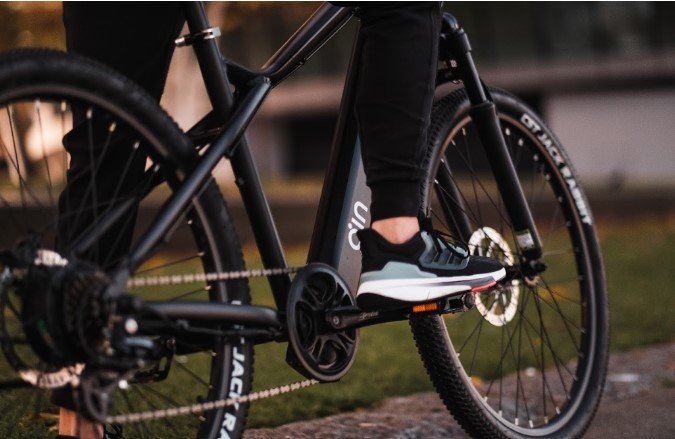The Future of Transportation: Why Electric Bikes are Here to Stay

The transportation landscape is present process a radical transformation, driven by using technological advancements, environmental concerns, and the search for extra efficient city mobility solutions. Among the improvements shaping this future, electric motorcycles (e-motorcycles) have emerged as a outstanding contender. Offering a mix of convenience, sustainability, and cost-effectiveness, e-motorcycles are rapidly becoming a mainstay in city and suburban transportation. This article explores the elements contributing to the upward push of e-motorcycles, their effect on various regions inclusive of the UK, and the arrival of rapid electric bikes.
The Rise of Electric Bikes
Electric bikes are essentially bicycles equipped with an electric motor that assists with propulsion. This simple yet revolutionary addition significantly enhances the cycling experience, making it accessible to a broader audience. The growing popularity of e-bikes can be attributed to several key factors:
- Environmental Benefits: As the world grapples with climate change, the need for sustainable transportation solutions has never been more urgent. E-bikes produce zero emissions, making them an eco-friendly alternative to cars and motorcycles. By reducing reliance on fossil fuels, e-bikes contribute to cleaner air and lower carbon footprints.
- Health and Fitness: Unlike traditional bicycles, e-bikes offer adjustable levels of motor assistance, allowing riders to exert as much or as little effort as they choose. This feature encourages more people to take up cycling, promoting physical activity and improving public health. Additionally, e-bikes make it easier for individuals with physical limitations or those recovering from injuries to engage in regular exercise.
- Urban Mobility: In congested cities, e-bikes provide a nimble and efficient means of transportation. They can navigate through traffic, utilize bike lanes, and often reach destinations faster than cars during peak hours. E-bikes also alleviate the pressure on public transportation systems, offering a reliable alternative for short to medium distances.
- Economic Considerations: The cost of owning and maintaining an e-bike is significantly lower than that of a car or motorcycle. With rising fuel prices and urban policies discouraging car usage through congestion charges and limited parking, e-bikes present a cost-effective solution for daily commuting.
Electric Bikes in the UK
The United Kingdom has embraced the e-bike revolution, with increasing numbers of people opting for this mode of transport. The UK government has recognized the potential of e-bikes to reduce congestion, lower emissions, and improve public health, leading to supportive policies and initiatives.
Government Incentives
Electric bikes in the UK offer various incentives to encourage the adoption of e-bikes. These include subsidies, grants, and tax benefits for individuals and businesses investing in e-bikes. The Cycle to Work scheme, for example, allows employees to purchase e-bikes tax-free, making them more affordable.
Infrastructure Development
To support the growing number of e-bike users, cities across the UK are investing in cycling infrastructure. This includes the expansion of bike lanes, secure parking facilities, and charging stations. Improved infrastructure not only enhances safety but also encourages more people to choose e-bikes over cars.
Public Awareness Campaigns
Efforts to raise awareness about the benefits of e-bikes are gaining momentum. Campaigns highlighting the health, environmental, and economic advantages of e-bikes aim to shift public perception and increase adoption rates. These campaigns often involve partnerships between government bodies, cycling organizations, and environmental groups.
Fast Electric Bikes
While preferred e-motorcycles provide enough pace for most urban commutes, there may be a developing demand for faster electric powered motorcycles. These high-pace e-bikes, regularly known as pace pedelecs or fast e-motorcycles, provide superior overall performance and greater versatility.
Fast electric bikes can reach speeds of up to 28 mph (45 km/h) or more, notably decreasing tour time for longer commutes. They are geared up with effective motors and larger battery capacities, providing extended range and better performance. This makes them suitable for a wider variety of journeys, inclusive of intercity travel.
The multiplied pace and electricity of fast e-bikes pose regulatory challenges. In many regions, including the UK, there are strict rules governing using rapid e-motorcycles. Riders might also want to acquire licenses, insurance, and adhere to unique safety standards. These rules intend to balance the blessings of speedy e-motorcycles with the want for street safety.
The marketplace for immediate electric powered bikes is increasing rapidly, driven by means of clients looking for greater green and bendy transportation options. Manufacturers are responding with innovative designs and capabilities, together with advanced suspension structures, incorporated GPS, and phone connectivity. These enhancements cater to the wishes of urban commuters, leisure riders, or even transport offerings.
The Future Outlook
The future of transportation is certainly electric powered, and e-bikes are poised to play an important role in this evolution. Several tendencies and tendencies imply that e-bikes are right here to stay:
Technological Advancements
Ongoing studies and development are using considerable enhancements in e-bike generation. Innovations in battery generation, motor efficiency, and lightweight substances are making e-motorcycles more effective, dependable, and cheap. Additionally, advancements in connectivity and clever features are improving the overall riding revel in.
Sustainable Urban Planning
As towns worldwide attempt to end up extra sustainable, e-motorcycles are becoming a quintessential part of city planning. Policies selling motorbike-sharing applications, dedicated biking infrastructure, and reduced car usage are growing in an surroundings conducive to e-bike adoption. Cities like Copenhagen, Amsterdam, and London are mainly via example, demonstrating the advantages of integrating e-bikes into city mobility techniques.
Cultural Shift
The shift towards e-bikes isn’t always just technological, but also cultural. Societal attitudes towards transportation are evolving, with a growing emphasis on sustainability, health, and convenience. Younger generations, especially, are extra willing to embrace e-motorcycles as a part of a broader life-style change closer to eco-friendly and energetic living.
Global Market Growth
The global e-motorcycle market is experiencing a sturdy increase, with projections indicating continued growth inside the coming years. Asia, Europe, and North America are the biggest markets, with increasing adoption fees driven by using urbanization, environmental issues, and supportive guidelines. This boom is attracting significant funding from hooked up producers and new entrants, in addition using innovation and competition.
Conclusion
Electric motorcycles represent a transformative force inside the future of transportation. Their environmental blessings, fitness blessings, and economic viability make them an appealing option for a huge range of users. The UK’s proactive approach in embracing e-motorcycles, coupled with the upward thrust of fast electric bikes, highlights the ability of this mode of transport to reshape urban mobility. As technological improvements retain and societal attitudes shift closer to more sustainable lifestyles, e-bikes are set to end up a permanent fixture within the transportation atmosphere.













